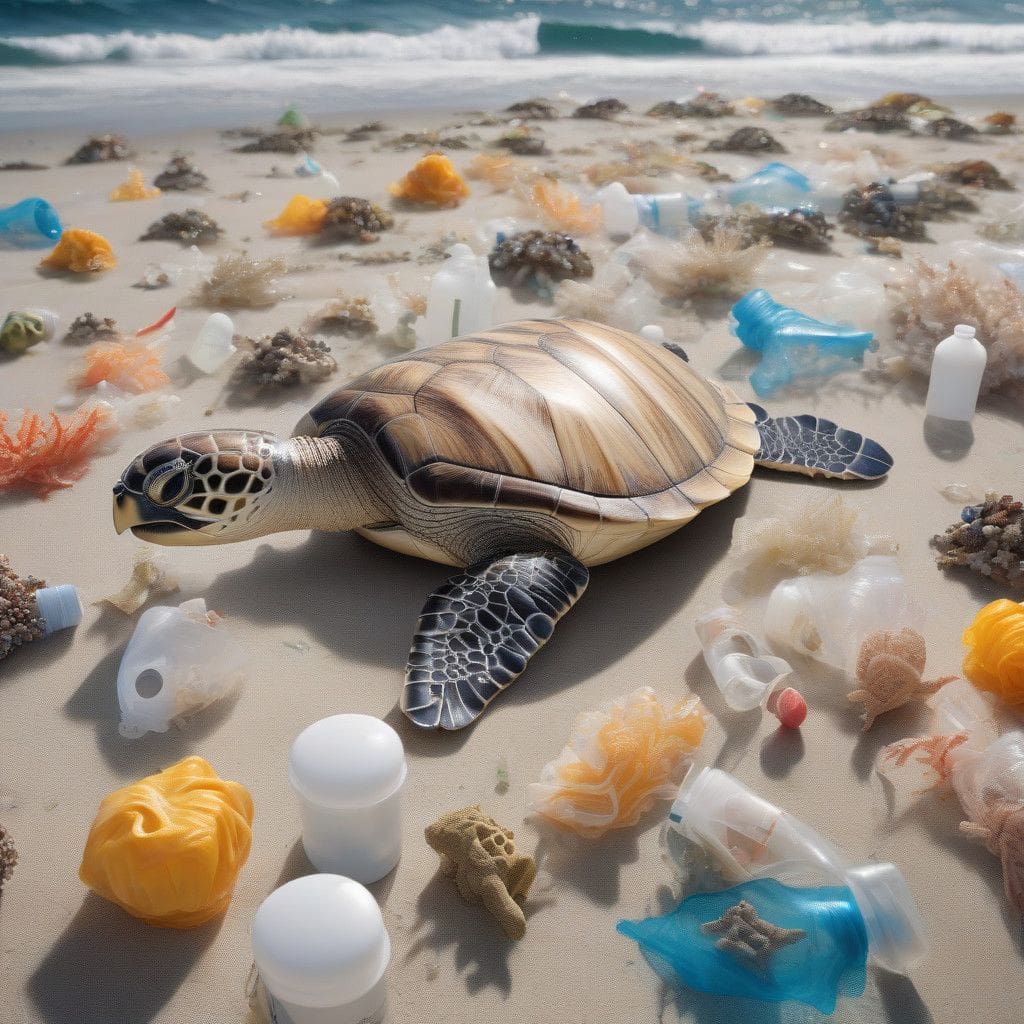Marine plastic pollution has reached alarming levels, becoming a serious threat to wildlife, ecosystems, and human health. The ocean is not just a vast body of water; it is a complex network crucial for sustaining life on Earth. A 2022 study from Kyushu University revealed an estimated 25.3 million metric tonnes of plastic have already made their way into our oceans, with almost two-thirds of that not being monitored. As evidence mounts regarding the urgent need for action, the implications of inaction become increasingly dire.
Now, for the first time, researchers, led by Professor Atsuhiko Isobe from the Research Institute for Applied Mechanics, have established a clear numerical target: a 32% reduction in plastic waste in our oceans by 2035. This target is not just a figure on paper; it is a crucial step toward preserving marine ecosystems that are already suffering from the impacts of plastic pollution.
Through extensive fieldwork and sophisticated computational models, the Kyushu team analyzed how plastic waste flows through the oceans, including its accumulation patterns and degradation rates. Their findings highlight the progression from large plastics to microplastics—small particles less than 5mm in size—which are far more difficult to remove from the environment. Microplastics enter the marine food chain, posing serious risks to fish and other wildlife, and those risks can eventually extend to human populations that rely on seafood for protein.
To illustrate the need for immediate action, it’s important to look at specific regions severely affected by plastic waste, like the Yellow and East China Seas. Projections indicate that achieving the 32% reduction by 2035 could lead to a remarkable 50% decrease in plastic waste by 2050 in these polluted areas. In fact, the amount of plastic waste could potentially drop by as much as 63% in these critical zones, securing a healthier aquatic ecosystem for future generations.
Chisa Higuchi, a Post-doctoral Fellow and the first author of the study, outlined a fundamental perspective: “We need to go beyond cleaning existing pollution; we must cut new plastic waste entering our oceans and rivers.” This is not merely an environmentalist’s plea but a rational approach to a crisis that demands our attention. The target is ambitious but attainable if bolstered by strategies such as improved waste management, advocacy for reusable alternatives to single-use plastics, and enhanced public awareness.
Global initiatives are already paving the way for this transformation. One of the most notable is the Osaka Blue Ocean Vision, introduced during the 2019 G20 Summit. This initiative aims not just to stem the tide of marine plastic pollution but to reverse it entirely by 2050. It underscores the collective responsibility of governments, industries, and individuals to navigate this crisis.
Achieving a 32% reduction in plastic waste requires a collaborative effort. Governments should create policies advocating for alternatives to single-use plastics, such as encouraging businesses to adopt more sustainable practices. For example, countries could impose higher taxes on plastic production or provide incentives for companies that embrace eco-friendly materials. Additionally, public awareness campaigns can educate communities about the importance of reducing plastic waste, making individuals more actively involved in the fight against pollution.
It’s vital to recognize that the burden does not lie solely on individuals or corporations; individual actions can contribute significantly to a larger average reduction. Simple steps like choosing reusable bags, containers, and straws can create a ripple effect. Moreover, local communities can organize clean-up projects to remove existing waste from beaches and waterways, which, while effective, should compliment broader strategies aimed at preventing future pollution.
Although the statistics might seem daunting, there’s a growing sense of optimism within the scientific community. Higuchi remains hopeful: “Many people can be pessimistic when hearing about the ongoing plastic waste problem in our lives. But I remain optimistic that we can find our way out of this predicament.”
As we aim for this numerical target over the next 13 years, it becomes increasingly clear that success hinges on our ability to foster a collective effort among all stakeholders involved. The sensibilities surrounding plastic use are shifting, and effective communication regarding the consequences of inaction will be essential.
In conclusion, the fight against marine plastic pollution is far from hopeless. The establishment of a target—like the proposed 32% reduction in plastic waste by 2035—serves as a critical framework for action. More than a numerical goal, it represents a concerted effort to protect marine ecosystems, wildlife, and ultimately, ourselves. Through collaborative initiatives, groundbreaking research, and a commitment to sustainable practices, we can chart a course toward cleaner oceans and a healthier planet.












